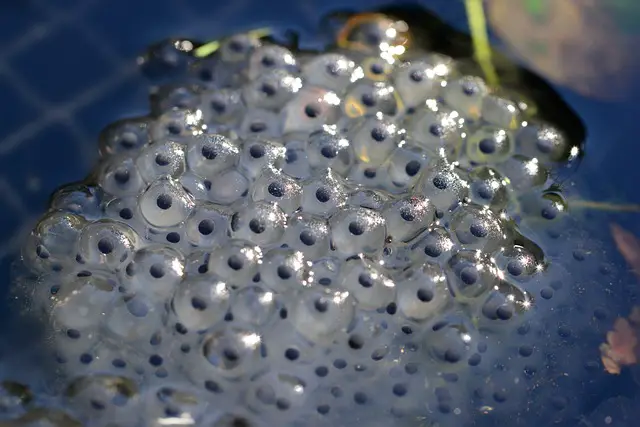Frog Spawn, the egg masses of frogs, toads, and newts, is a common sight in many ponds and waterways across the United States. But what exactly is it? And can you eat it? So let’s take a closer look.
Frog Spawn Definition
Frog spawn is a mass of eggs surrounded by a jelly-like material. The eggs are typically black or dark brown and are arranged in long strands or clusters. Depending on the frog species, a single mass of frog spawn can contain anywhere from 10 to 10,000 eggs!
Can You Eat Frog Spawn?
Now that we know what frog spawn is, you might wonder if it’s edible. The simple answer is yes; you can eat frog spawn. Some people believe that frog spawn has a similar taste and texture to caviar. If you’re thinking about trying it for yourself, the best way to eat frog spawn is to fry it or add it to soups or omelets lightly.
Can you take frog spawn from a pond?
Frog spawn is the name given to the eggs of a frog. They are usually laid in ponds or lakes, and each egg is surrounded by a gelatinous substance that helps to protect it from predators. Once the eggs have hatched, the tiny tadpoles will spend several weeks growing and developing before they emerge from the water as adult frogs.
It is generally considered acceptable to take frog spawn from a pond and transfer it to another location, provided the spawning ground is not threatened.
This can be a helpful way of establishing a new population of frogs in an area where they have become extinct.
However, ensuring that the pond where the frog spawn is not damaged is essential. For example, if the pond is polluted or drying out, it is best to leave the spawn where it is.
Taking frog spawn from a healthy pond and transferring it to a new location can help ensure this amphibian species’ survival.
Do frogs protect their spawn?
There are many ways that frogs protect their spawn.
One way is by choosing a safe location to lay their eggs. Frogs typically lay their eggs in ponds or other bodies of water that are secluded from predators.
The eggs are often hidden among the vegetation or floating on the water’s surface, making them difficult for predators to find. Once the eggs hatch, the tadpoles are also at risk from predators.
To protect their young, many species of frogs will stay close to the pond or pool where they laid their eggs.
They will use their bodies to shield the tadpoles from predators and will even attack predators that come too close. In some cases, frogs will even sacrifice themselves to save their young.
By understanding how frogs protect their spawn, we can learn how to protect these critical animals better.
Conclusion
Frog spawn is common in many ponds and waterways across the United States. It’s essentially a mass of eggs surrounded by a jelly-like material. The eggs are typically black or dark brown and are arranged in long strands or clusters. Depending on the frog species, a single mass of frog spawn can contain anywhere from 10 to 10,000 eggs! Luckily, if you’re curious about trying frog spawn for yourself, it is edible. Some people even say it tastes similar to caviar!




